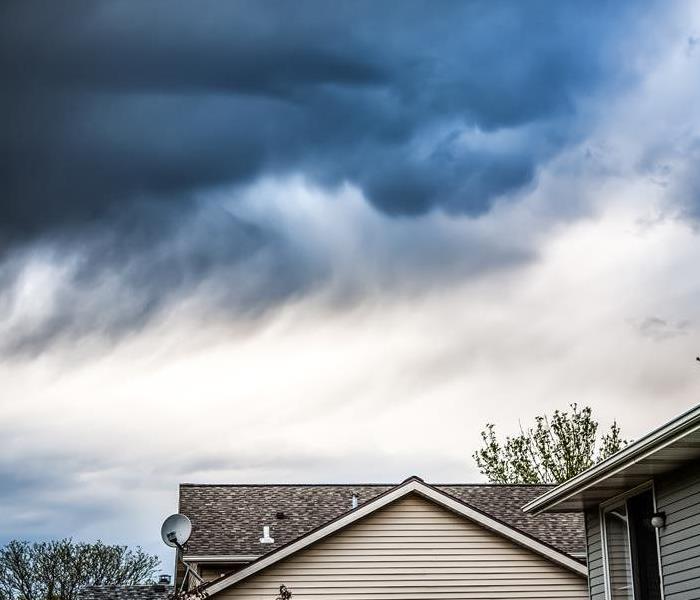Assessing Wind Damage After the Storm: What to Look For
9/28/2023 (Permalink)
Wind damage is a common consequence of storms in the South Central region. Whether it's a hurricane, tornado, or severe thunderstorm, strong winds can wreak havoc on homes, buildings, and landscapes. After a storm passes, it's important to assess the damage to ensure the safety of your property and plan for necessary repairs. In this blog post, we will discuss what to look for when assessing wind damage after a South Central storm.
Roof Damage
Inspect your roof for signs of damage caused by strong winds. Look for missing or lifted shingles, cracked or broken tiles, or any visible gaps in the roof structure. Pay attention to areas around chimneys, vents, and skylights, as they are common entry points for wind-driven rain. Additionally, check your gutters and downspouts for debris or signs of detachment, as they play a crucial role in diverting water away from your home.
Windows and Exteriors
Check your windows and doors for any visible damage. Strong winds can cause windows to crack, shatter, or become dislodged from their frames. Inspect the caulking around windows and doors for any gaps or signs of wear, which can lead to water infiltration during storms. Test your doors to ensure they open and close properly, as excessive wind pressure can cause misalignment or damage to the hinges and frames.
Examine the exterior of your home or building for any damage to the siding or walls. Look for loose or missing siding panels, dents, cracks, or holes. Inspect the corners, edges, and seams for any signs of separation or damage. Wind can cause siding to become dislodged or compromised, which can lead to water penetration and further structural damage if not addressed promptly.
Trees and Outdoor Structures
Assess the impact of the storm on trees and your landscape. Check for fallen or uprooted trees, broken branches, and damaged vegetation. Fallen trees can cause extensive damage to structures and pose safety risks, so it's crucial to address them promptly. If you notice any leaning or weakened trees on your property, contact a certified arborist to evaluate their stability and recommend appropriate actions.
Inspect fences, decks, and other outdoor structures for wind damage. Look for signs of leaning, loose or missing boards, broken fasteners, or any structural compromise. High winds can weaken these structures, potentially making them unsafe to use. Assess the stability and integrity of your fences, decks, pergolas, and sheds to ensure they are capable of withstanding future storms.
Power Lines and Utilities
Exercise caution when inspecting the area around power lines and utilities, as they pose a significant safety risk. If you notice any downed power lines or damaged utility infrastructure, report it to the appropriate authorities immediately and keep a safe distance. Do not attempt to touch or move any electrical equipment or wires yourself.
Professional Assessment
While a visual inspection can help you identify obvious wind damage, it's a good idea to consult with a professional, such as a licensed contractor or building inspector, for a more thorough assessment. They can identify hidden or structural damage that may not be immediately noticeable to the untrained eye. A professional assessment can also provide a more accurate estimation of repair costs and ensure that all necessary repairs are properly addressed.
Assessing wind damage after a South Central storm is essential for the safety and restoration of your property. Carefully inspect your roof, windows, doors, siding, trees, and outdoor structures for any signs of damage. Ensure that any downed power lines or utility damage is reported to the appropriate authorities. For a comprehensive assessment, consider consulting with a professional who can provide expert advice and guidance on repair options. By promptly assessing and addressing wind damage, you can protect your property and ensure its resilience against future storms.





 24/7 Emergency Service
24/7 Emergency Service
